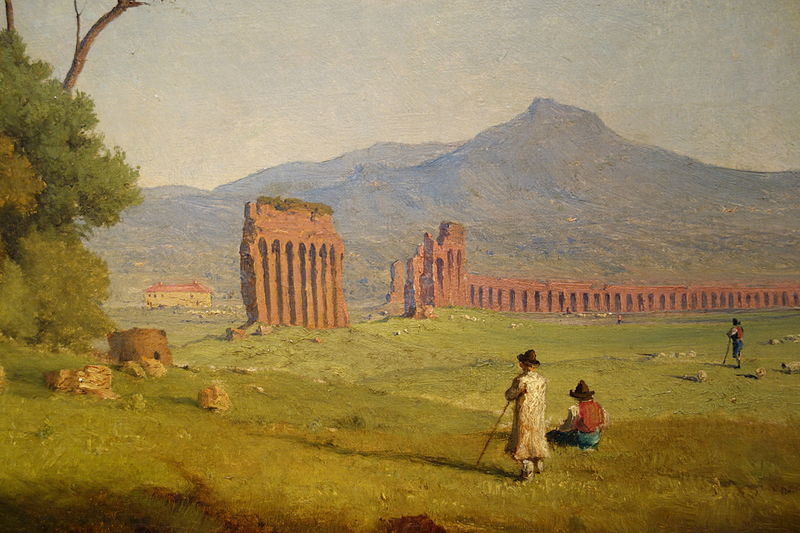Infrastructure is the talk of the town in Washington, D.C. where I now live and with good reason. The infrastructure upon which the livelihoods and lives of all Americans depends is in sorry shape. The American Society of Civil Engineers 2021 infrastructure report card gives the United States an overall grade of C minus.
Everyone in Washington, yes, everyone, believes some sort of major investment needs to be made in our transportation, water, and sewer systems which have been sorely neglected. There are other concerns as well about our energy infrastructure and our communications infrastructure—both of which are largely in private hands. The wrangling over how much will be spent and on what is likely to go on for months.
What won’t be talked about is that the cost of maintaining our infrastructure is rising for one key reason: There’s more it every day. We keep expanding all these systems so that when they degrade and require maintenance and replacement, the cost keeps growing.
There is a lesson on this from ancient Rome. Few modern people understand that the Romans financed their expansion and government operations using the booty taken from vanquished territories. That worked until it didn’t. When Rome reached its maximum expanse, when it no longer conquered new territories, the booty stopped coming. With the borders of Rome the longest the empire had ever had to defend, it now relied primarily on taxes to finance a large army and administrative presence across the empire in order to maintain control.
Our modern-day version of booty has been cheap energy, much of it supplied by the oil, natural gas and coal fields of America and later its uranium mines. That cheap energy and other previously cheap resources have been increasingly elusive since the year 2000 even though periodic collapses in prices have given us the illusion that somehow we will get back to the status quo ante.
Moreover, we kept adding infrastructure of all types including the traditional—roads, bridges, ports, airports—and the advanced—fiber optic, satellites and wireless. We stand where the Romans were at the peak of their empire. The cost to maintain our infrastructure keeps climbing.
We have a modern piece of analysis that puts the problem in relief though most people have misinterpreted its message. The message comes from Limits to Growth, an assessment of our economic prospects based on resource use and capital constraints. What Limits to Growth foresaw is now unfolding. The limit the writers were talking about wasn’t, strictly speaking, a limit on resources, but rather a limit on available capital.
This is because before a system can expand, it must first be maintained. What is happening right before our eyes is that our infrastructure is degrading and we are falling further and further behind in maintaining it. Instead, we are living off our capital, so to speak. At some point all of our capital expenditures will go toward simply maintaining the current system with no funds left over for expansion. That is the primary limit on growth. And, that is the inevitable outcome for an economic system that is based on the idea of perpetual expansion. To quote economist Herbert Stein, “If something cannot go on forever, it will stop.” (The same holds true for the broader industrial, commercial and residential infrastructure.)
The idea that we might need to downsize our expectations and our infrastructure to avoid a sudden destabilizing reversal is not only unmentionable in the mainstream media and in policy circles, it is unthinkable.
But Rome did the unthinkable. Having become ungovernable because of its vast size and complexity, Emperor Diocletian split the empire in two in 286 A.D., appointing a co-emperor to rule the Western Empire while Diocletian ruled the Eastern Empire. This may be the only example in history of an empire voluntarily splitting itself into parts—in this case, explicitly to increase stability and improve governance.
The downsizing and splitting of power seemed to work. The Western empire lasted almost another two centuries, falling to invaders in 476. The Eastern Empire—which became known as the Byzantine Empire—endured until 1453, nearly a thousand years beyond its sister empire.
The solution to America’s infrastructure crisis does not lie in further expansion. Consolidation and decentralization might be a better course if we can define what that means and create a fairer system for distributing the resulting fruits.
But, alas, I do not think consolidation and decentralization are on the menu this year in the infrastructure debate. If we look to history, we can see where heedless expansion leads, namely to a forced decentralization and fragmentation that is far more wrenching than the voluntary bifurcation classical Rome experienced. It seems America—with the world following close behind—will continue a policy of endless expansion until expansion cannot continue. What happens after that, history tells us, will not be pleasant.
Image: Remains of a Roman aqueduct in the Italian countryside. “Roman Campagna” by George Inness, detail, 1858, oil on canvas – New Britain Museum of American Art. https://commons.wikimedia.org/wiki/File:Roman_Campagna_by_George_Inness,_detail,_1858,_oil_on_canvas_-_New_Britain_Museum_of_American_Art_-_DSC09186.JPG






